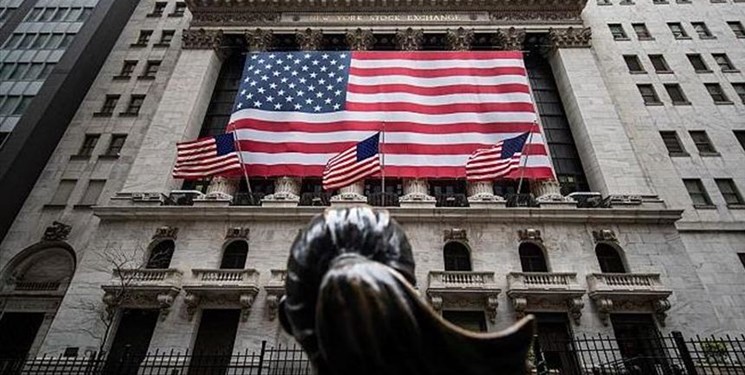About JPMorgan Chase
JPMorgan Chase isn’t what it used to be. What initially began as The Manhattan Company, a venture to provide clean drinking water to New York in the late 1700s, involving historical legends such as Alexander Hamilton and Aaron Burr has blossomed into something much different.
JPMorgan Chase is the largest bank in the United States (in terms of assets).
The company apparently has “30,000 middle-market consumers (within its commercial banking division), 1,700 corporate banking customers and 1,100 commercial real estate banking customers.”
They also have over a quarter of a million employees around the world, likely ready to help you open up a checking or savings account!
Nevertheless, while many financial institutions have been accused of questionable practices, account fraud and other bad business practices, JPMorgan isn’t at the top of that list. Specifically, the company has a solid reputation in the finance and banking industries, at least compared to its counterparts such as Wells Fargo and others.

Like most big banks, JPMorgan Chase makes a lot of its money from customer fees and loan interest. Whether its clients in their commercial banking business or wealth management or investment banking division, there are plenty of ways for JPMorgan Chase to keep money flowing in and generate a profit.
Although this historical company has stood the test of time, let’s see whether or not the company’s stock should have a spot reserved in your investment portfolio.
JPMorgan Chase’s stock financials
The company currently has a share price of around $120, a market capitalization of almost $366 billion and a very attractive price-to-earnings (P/E) ratio of just under 9.
As mentioned in previous articles, a P/E ratio below 20 generally indicates that a company’s stock price is undervalued to the actual value of the company. Hypothetically, this means that one could buy stock in America’s largest bank at a discount.
We haven’t seen many companies that are undervalued, especially in this current market environment, so it’s refreshing to find a potential discount in a quality company such as JPMorgan Chase.
We should also note that the company offers shareholders an annual dividend of $4.00, which is another reason for prospective investors to be interested in picking up a few shares and be curious about the company’s financials in general.

Pictured above is current chairman and chief executive officer (CEO) of JPMorgan Chase, Jamie Dimon
As of the last report (end of 2021), JPMorgan’s total assets stand at around $3.7 trillion (yes, with a T) while their total liabilities are around $3.5 trillion. While we would normally not be too thrilled about a company’s total assets and liabilities being so close together, banking involves a lot of debt (especially long-term debt). As customers around the world pay down their outstanding debt(s) owed to JPMorgan as well as the general expenses that any small or large company incurs when borrowing money from the bank, we suspect JPMorgan’s total assets will increase.
Thus, given the nature of banking and the fact that JPMorgan is one of the largest banking institutions in the world, we’re not too concerned with their total liabilities.
Over the past five years, the company’s net interest income has been relatively flat and consistent at around $50 billion each year. We don’t mind this since it seems that the company is retaining its customers and clients over relatively long stretches of time and collecting payments in the process.
As an investor, the consistency is comforting.
Onto JPMorgan’s cash flow statement, their net income has been somewhat stable as well in recent history, starting at around $24.5 billion in 2017, leaping all the way up to nearly $36.5 billion in 2019, dropping down to $29.1 billion in 2020 and subsequently skyrocketing nearly $49 billion in 2021.
.jpg/480px-270_Park_Avenue_(WTM_by_official-ly_cool_100).jpg)
Looking at the big picture of the company’s net income, it seems relatively stable, however, there was a sizable spike between 2020 and 2021. This could possibly be attributed to people, namely business owners taking out more loans for their companies, as the COVID-19 pandemic has had a major impact on the survivability of many small businesses and startups.
Of course, non-business owners could also be taking out more loans or potentially refinancing existing loans with the bank which could also be a reason for this massive jump in net income.
JPMorgan Chase’s stock fundamentals
From a profitability standpoint, JPMorgan has a modestly higher annual net profit margin than the banking industry as a whole. Additionally, the company’s annual return on equity and assets are both higher than the industry as well.
For the sake of comparison, JPMorgan’s profit margin is just above 35% while Bank of America’s sits at around 34%. Other major banks such as Wells Fargo and Citigroup considerably lower profit margins than JPM and BofA (Bank of America).
Risks to consider in JPMorgan Chase stock
If any company or stock is sensitive to the overall state of the national and global economy, it’s big banks.
Time and time again, even the largest and most seemingly reputable banks have collapsed due to poor management, poor judgement, unwarranted optimism, greed and a distressed economy. From our perspective, especially as the world continues suffering the impacts of inflation, real estate markets remain volatile and people continue to take out loans they can’t afford to pay back, there will always be huge threats to the financial system that banks such as JPMorgan rely on.

Regardless of whether you’re considering buying stock in the company or another bank for that matter, the current recessionary pressures and aforementioned threats to the economy are risks to consider before investing your money.
Although there will always be threats to any sort of business, company or industry as a whole, when it comes to the banking industry JPMorgan appears to be one of the safer investments if one were to want to invest in the sector.
Should you buy JPMorgan Chase stock?
Given that JPMorgan Chase is one of the largest banks in the world, they are the largest bank in the United States in terms of assets and like other banks, have a diversified portfolio of business activities that people need and that the stock price seems to be objectively undervalued, we give the company a “buy” rating.
DISCLAIMER: This analysis of the aforementioned stock security is in no way to be construed, understood, or seen as formal, professional, or any other form of investment advice. We are simply expressing our opinions regarding a publicly traded entity.